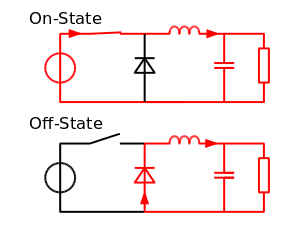In this tutorial, we will explain the workings of a buck converter. This is used to convert the voltage or current of the source to a desired level. After this, we will explain and simulate it using PSPICE. At the start, we provide a brief and concise introduction to converters, specifically buck converters, along with their circuit diagram and an explanation of the output they will show. After that, we will discuss the circuit simulations using PSPICE and their results with the theoretical explanation (which should be the same). At the end of the tutorial, we have provided an exercise for you to do on your own, and in the next tutorials, we will assume that you have done those exercises and not explain the concept regarding them.
You can check the following tutorial to simulate the buck converter using Simulink.
Introduction to Buck Converter Simulation in PSpice
A buck converter is one that converts the DC voltage level of an input source to a lower value and shifts the current level of the source to a higher value at the output. A simple circuit diagram of a buck converter is shown in the figure below.
The switch in the circuit is the main component, and it controls the voltage level at the output. The on and off states of the switch are shown in the figure below.
How to Design Buck Converter in PSpice
Let’s design a simple circuit for a buck converter, which is to be discussed in this tutorial, and a boost converter with a few details provided as an exercise. Open the PSPICE design manager on the PC by typing design manager in the search bar. From the design manager, click on the run schematic button to open a new blank schematic, as shown in the figure below.

After opening the new schematic, before jumping into designing, first save the schematic by clicking on the file button at the top left corner and then selecting save as so that we can access it anytime in the future. Refer to the figure below.

Click on the Get New Part icon at the top bar of the schematic window in order to search for the components that are needed for circuit design.

Placing Components
In the Get New Part window, type ‘d’. It will display all the diodes available for PSPICE. From that list, select a simple diode, as shown in the figure below.
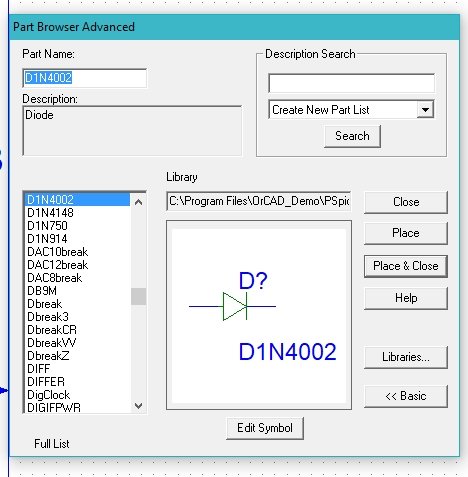
Again, open the Get New Part window, and in the part name block, type ‘L’. Select the inductor from the list given and then click on Place & Close, as shown in the figure below.

Again, open the Get New Part window, and in the part name block type C, select the capacitor from the list given, and then click on Place & Close as shown in the figure below.
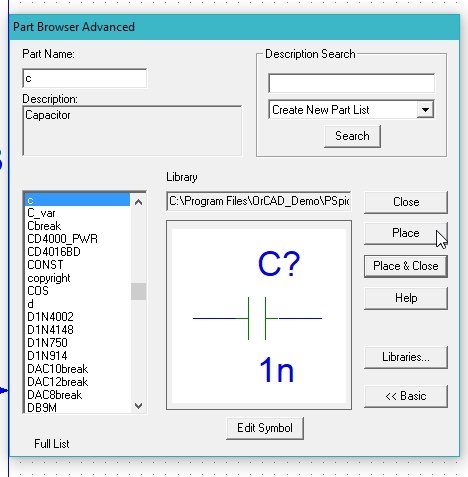
Again, open the Get New Part window, and in the part name block type ‘R’, select the resistor from the list given, and then click on Place & Close as shown in the figure below.

This resistor will act as a load in the circuit. Again, open the Get New Part window, and in the part name block, type Vdc, select the supply from the list given, and then click on Place & Close as shown in the figure below.
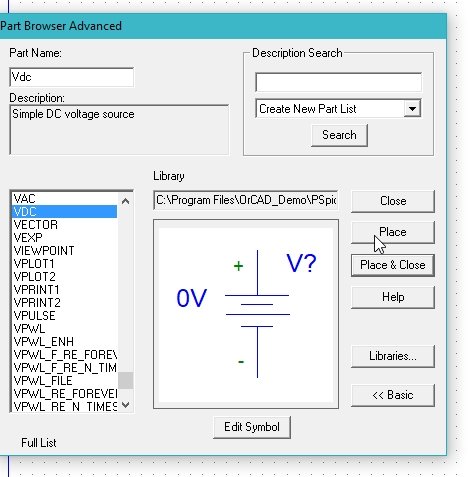
Placing Switch
NNow we have to place a switch, which is the main component in the buck converter circuit diagram. Open the get part window, type “S“, and select the switch that pops up first, as shown in the figure below.
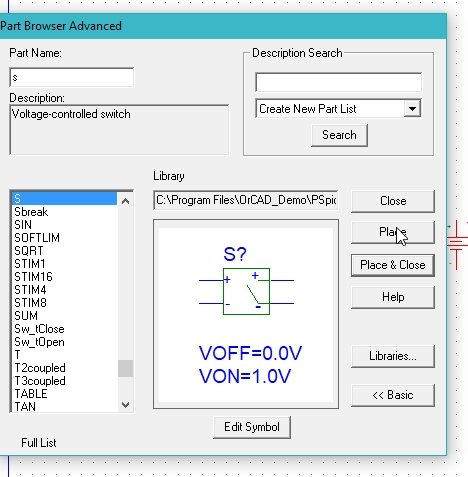
Also, we have to supply a pulsating DC, or we can say a PWM waveform, using a pulse source. In the get part window, type VPULSE and place the component as shown in the figure below.
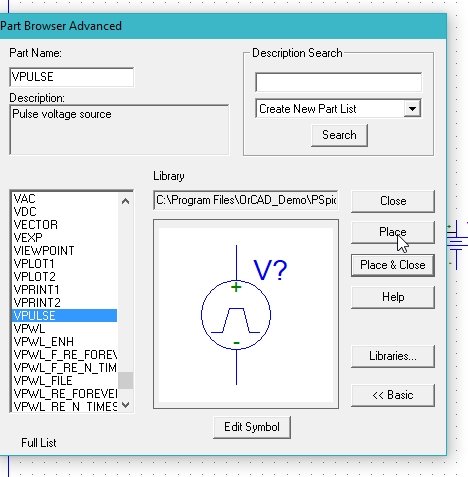
The next step is to place a ground. Do the same again, and in the part name type GND, select the ground, and then click on Place & Close as shown in the figure below.
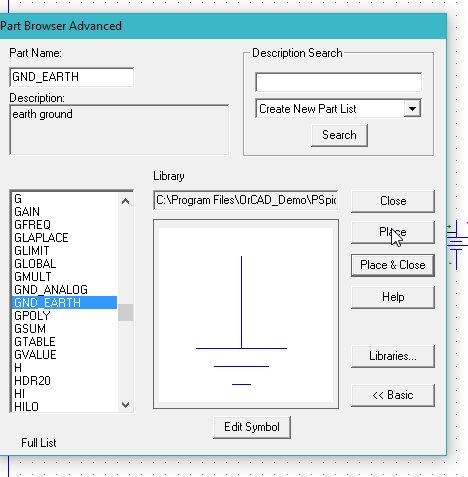
The components placed in the schematic window are shown in the figure below.
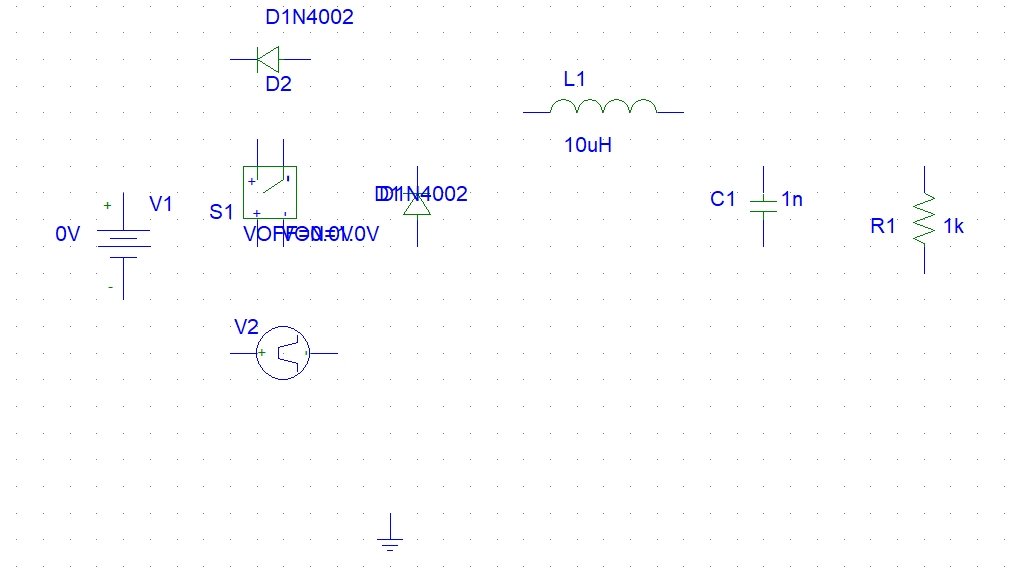
Click on the draw wire icon at the top bar of the schematic window in order to connect the already placed components for circuit design.
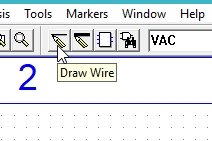
Complete Circuit Diagram
Connect all the components to complete the circuit diagram as shown in the figure below. ,
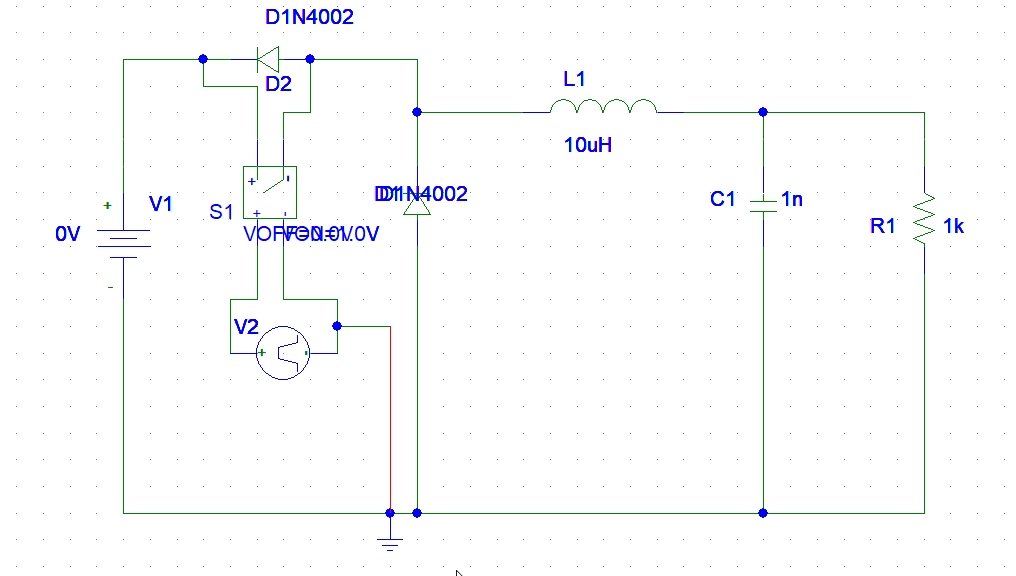
On the top of the schematic window, click on the Voltage/Level Marker button, as shown in the figure below.
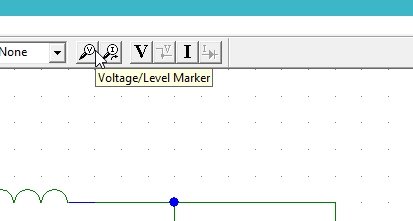
Place it at the output resistor and at the input node, as shown in the figure below.

The next step is to set the attributes of the input VPULSE voltage supply connected to operate the switch. Double-click on the input supply we connected in the circuit previously and set the magnitude of all the attributes as shown in the figure below.

Adjust the value of the input DC source to 10 V, as shown in the figure below.

Set the value of the capacitor to 100 u, as shown in the figure below.
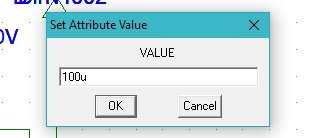
Set the value of the load resistor to 10 ohms, as it will make the voltage difference obvious, as shown in the figure below.
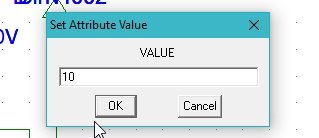
The next step is to adjust the properties of the simulations in order to produce a graph of the voltage at the marker. Click on analysis and then click on setup, as shown in the figure below.
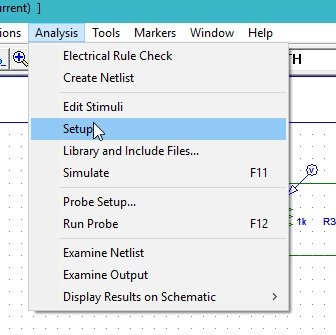
A window will appear. Click on the transient block on the window and adjust the properties of the window according to the requirements. Refer to the figure below.

Simulations
Now comes the simulation part. Click on the analysis at the top bar of the schematic window and then click on simulate, as shown in the figure below.
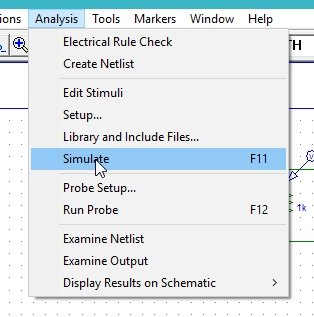
A schematic window will appear showing the voltage across the load resistor, as shown in the figure below.
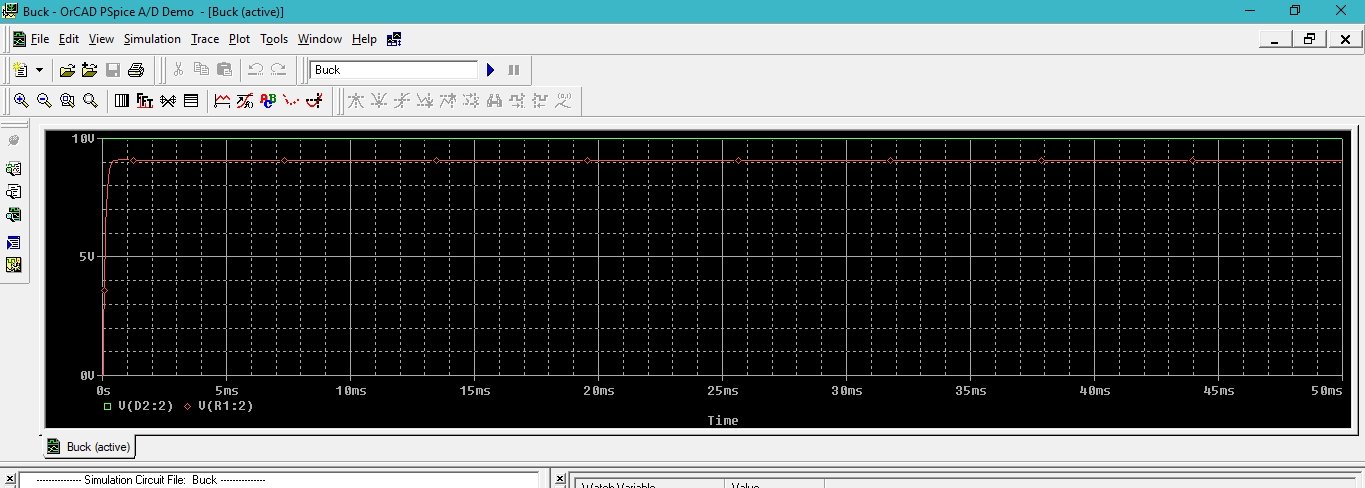
The red waveform is the voltage level across the output, whereas the green waveform implies the input voltage level. As we have discussed in the introduction, the voltage level of the output should be lower than the input, so the simulation gives the same results. By converting the voltage markers to current markers, the current at the output will be higher, as shown in the figure below.
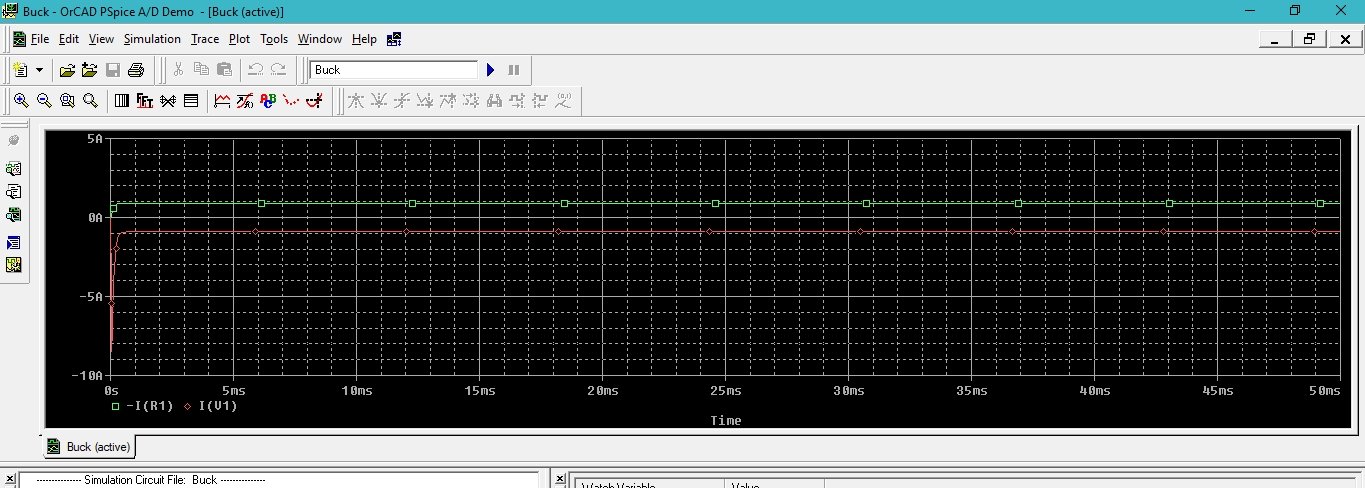
The boost converter is another type of DC level converter that is opposite to that of the buck converter, i.e., it increases the voltage level at the output compared to the input and decreases the current level at the output compared to the input current level.
Exercise
- Design and simulate a boost converter using PSPICE.
(Hint: The voltage level at the output will be higher than the input voltage, as the name suggests.)
Conclusion
In conclusion, this tutorial provides an in-depth overview of designing and simulating a buck converter in PSpice software. It covers step-by-step procedures with details. An example is also provided to help better understand the concept of buck converters. You can use these concepts to design more complex circuits. An exercise is also given to reinforce the concept of the buck converter. Hopefully, this article has been helpful in expanding your knowledge of designing circuits with PSpice software.
You may also like to read
- Raspberry Pi Pico W Publish Sensor Readings to Node-Red Dashboard through MQTT
- Displaying Images in ESP32 and ESP8266 Web Server
- 4×1 Multiplexer Design in Labview: Tutorial 33
- Create Simple ESP8266 NodeMCU Web server in Arduino IDE
- HC-05 Bluetooth Module with STM32 Blue Pill using STM32CubeIDE
- ESP32 ESP8266 MicroPython Send Messages to WhatsApp
- Arduino Send Messages from Android to LCD with MIT App Inventor
This concludes today’s article. If you face any issues or difficulties, let us know in the comment section below.



